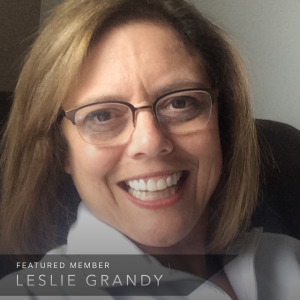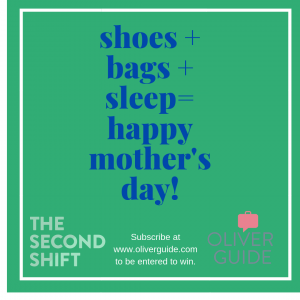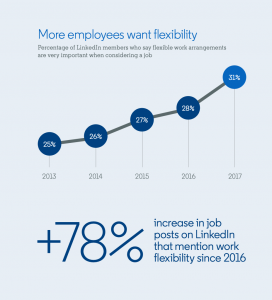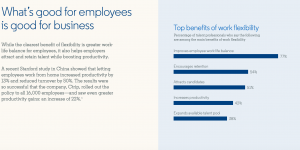Often, the savviest career strategies we give our members come directly from other members. Alexis Jenkins is a perfect case in point. The generosity of her insights into how to navigate everything from securing a pitch to negotiating the tricky balance of work and friendship speak volumes. A self-described problem-solver who truly enjoys helping people and companies, Alexis is a member we’re very proud to feature since she shines a bright light on the importance of personal and professional integrity being the core of every endeavor—which we couldn’t value more here at The Second Shift.
Tell us your work story : Who are you and what do you do?
I’m Alexis Jenkins, and I’m in the business of helping companies scale and define themselves. I’ve worked in Silicon Valley and Silicon Alley. I’ve worked with very small companies and huge companies. I’ve worked in fashion, SaaS, e-commerce, and non-profit. The thru-line? I genuinely enjoy helping and solving problems.
What is your proudest professional accomplishment?
Creating a company culture and core values for HoneyBook that are still in effect today. I helped set the whole tone of our work environment!
What is the hardest challenge you’ve faced, work-wise?
The hardest challenge I’ve faced was balancing work and friendship with my former co-founder when things got rocky. In the past, our work relationship was fantastic. Once we decided to go into business together—long distance, no less—things started to shift. I made an internal decision before joining this co-venture that if I felt our friendship beginning to suffer at any point, I would walk away from the company in the hope of salvaging the friendship. When that time came, it was shocking and disappointing. My self-esteem and self-worth took a significant beating because I felt like a failure to our company. Now, looking back, I’m happy that our friendship is strong, and that I was able to rebuild my confidence.
If you could change one thing about how your given field operates, particularly with regards to women, what would it be and why?
I hope women continue to be transparent when it comes to their salaries. I’ve learned some of the best lessons about asking for a raise, negotiating a salary and equity, and advocating for equal pay by speaking to my squad, who work in the same field. For me, having financial stability gives me the motivation to put in 200 % every single workday. There’s no better feeling than lying down at the end of each night and knowing you’ve earned every cent of your paycheck.
What advice do you have for other women looking to make a career change but who are afraid or lack confidence? How is it on the other side?
Start small. Work on something each day that helps you down this new path: create a new email; purchase the URL for your company; write down your goals. Every day needs a task that helps you see yourself in this new career. In the past, I have felt paralyzed and sometimes too proud to ask for help. I’ve learned that my circle of colleagues, friends, and family are there for a time of transition but no one can read your mind. Just talk. Now that I’m on the other side, I feel hopeful and grateful that I didn’t give up on my dream.
Do you have any advice on how to craft a winning pitch?
Have someone read over the project listing and your pitch to make sure you’ve covered everything. Remember to add clear examples of you doing a specific task they require.
What continues to draw you to your chosen field and what do you hope to accomplish in the years ahead?
When I see a mess or hear of a problem, I love cleaning it up and creating a solution. I hope to establish a reputation where I become the go-to person for startups and major brands to resolve big problems they may be facing.
What is the best piece of professional advice you’ve ever received?
Manifest the life you want! Write it down, meditate, visualize, and work towards creating the professional existence you envision!
Who has been your biggest cheerleader / supporter / mentor?
Shadiah Sigala has been one of my biggest champions. I can call, text, or mail a letter and she will respond, giving me guidance and encouragement. You can follow her on Instagram : @shadiahs
How do you negotiate the balance between life and work when you are the one setting the boundaries?
I don’t apologize any more. As a new mom, at first, I felt like I had to hide that I had just had a baby, that it would make me look undedicated to a role. Now I’ve realized that my family is a part of my professional life because I respect time. Wasting time is no longer an option, so being unapologetic about my needs and asking direct questions to employers allows me to use everyone’s time more wisely. Also, I’ve learned to be more patient and picky about the roles I apply for or the projects I take on. I used to fearlessly enter roles because I just had me to worry about and my lifestyle was different. Now, with a kid, I’ve learned that I can’t say yes to everything if it means taking away copious amounts of time from him.
If you could tell your younger self one thing about what this professional journey would be like, what would you tell her?
What you think you want doesn’t even begin to be your reality—and that’s okay. Buckle up, continue to work extremely hard, and you’ll see it’s for the best.
How do you make work work for you?
By doing things that fit with what I need today and tomorrow. In the past, I used to work based on a 2-year, 5-year, and 10-year-plan. GIRL, BYE! I didn’t know my life would be like this a year ago! So, I work in the present, and I’ve found it’s so much more fun this way
Want to be a Featured Member? Fill out this
questionnaire and you will be sumbmitted for consideration!









